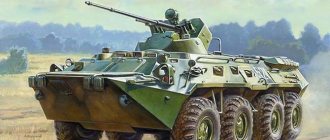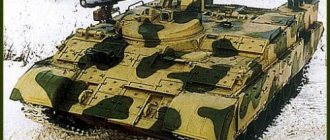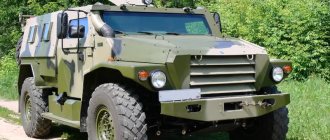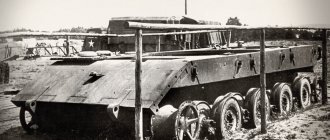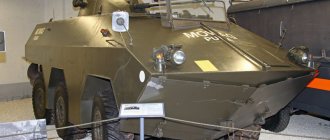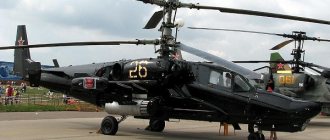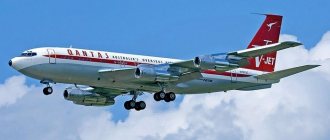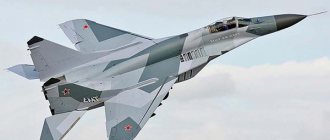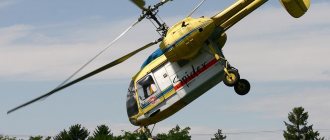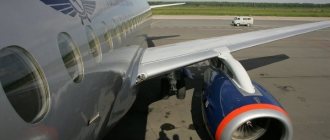BTR-D is an airborne amphibious armored personnel carrier, created specifically to equip airborne troops, was developed and put into service in 1974 on the basis of the BMD-1. The vehicle was originally intended for transporting personnel and the wounded, but could be successfully used for transporting weapons, ammunition, fuels and lubricants and similar military cargo.
“Centaurs” didn’t take root
Five years ago, the Ministry of Defense was considering the issue of equipping the Russian Armed Forces with the Italian Centauro wheeled tank, but things did not go further than testing.
Testing of the two vehicles began in 2012 and was carried out in Kubinka, near Moscow, at the training ground of the Research Testing Institute of the Russian Ministry of Defense. One of these wheeled tanks was equipped with a 105 mm caliber gun, and the other - 120 mm. In January 2013, the purchase was abandoned and the contract was suspended. As Colonel General Vladimir Chirkin noted, then the commander-in-chief of the Ground Forces, “these combat vehicles have certain advantages, but there are also many disadvantages: they were overly advertised - not everything fits.”
According to open sources, the Centaur, weighing 25 tons and equipped with a 105 mm caliber gun, can reach speeds of up to 100 km/h. Power reserve - 800 km. There are three people in the crew. Experts note the high maneuverability and good controllability of these vehicles, but their armor only protects them from heavy machine gun fire. In turn, the Centauro developers note that the wheeled tank's cannon provides the same firepower as most legacy main tanks.
At the International Exhibition of Arms and Military Equipment of the Ground Forces Eurosatory 2016, the Centauro II MGS 120/105 armored vehicle was presented - an improved version of the previous armored wheeled version. The update concerned the replacement of the main type of weapon from a 105 mm gun to a 120 mm gun.
The tanks are produced by the Iveco-Oto Melara consortium. The vehicles are in service with Italy, Spain and Oman. Centauro was used, in particular, in Yugoslavia, Somalia and Iraq, and was used as part of the UN military contingent in Lebanon. At the same time, vehicles participating in peacekeeping operations in the Balkans were equipped with additional armor.
As experts note, this technology is especially interesting because there are no vehicles of this class in the Russian army, although the development of such platforms was carried out back in Soviet times.
Specifications:
Length: 5883 mm Width: 2630 mm Height: 1650-2300 mm Ground clearance (clearance) adjustable: 100-450 mm Track: 2380 mm Combat weight: 8.0 tons. Maximum speed: - on the highway - 60 km/h - afloat – 10 km/h Fuel range: 500 km Crew: 3 people and 10 paratroopers Reservations: bulletproof 10-15 mm Armament: machine guns 2 × 7.62 mm PKT or PKTM Obstacles overcome: elevation - 32 degrees. ditch width - 2.5 m surmountable wall - 0.7 m ford depth - floating
Today I offer you a Walkaround photo review of the BTR-D armored personnel carrier, taken by me at the celebration of May 9, 2014.
BTR-D models are produced in scale 1:35 by Orient Express and by Ukrainian company ACE in scale 1:72. Also, on this scale, modifications of the 2S9 “Nona” armored personnel carrier and the BTR-ZD armored personnel carrier are produced.
Floating armored personnel carrier
The presence of two symmetrically located water cannons in the rear of the vehicle indicates the vehicle’s ability to overcome water obstacles
This quality is very important in the conditions of local tactical operations, during which the establishment of crossings is difficult or can unmask the direction of the main attack, and the capture of bridges is not always justified. “Navigating” qualities can be very useful during sea or river landings, especially if the landing craft cannot come close to the shore
It is not known for certain what speed the water cannons impart to the Boomerang armored personnel carrier; representatives of the design bureau limit themselves to the definition of “not bad.”
Design
When creating the Boomerang VPK-7829, they used multi-layer armor containing ceramics. This type of protection is many times more effective than homogeneous protection.
The engine is located in the front of the vehicle, this allows landing and disembarking troops from the stern. The platform can be equipped with various remote-controlled combat modules depending on the type of vehicle. The UTD-32TR four-stroke diesel engine with turbocharging with a power of 510 hp was to be used as a power unit. With. in combination with a hydromechanical transmission and hydrostatic transmission. The engine-transmission compartment was to be located in the middle of the body.
Description[edit]
Review[edit]
BTR-D is based on the BMD-1, but 60 mm longer and without a turret; Instead, it has a small, flat superstructure with a hatch on top. [2] [3]
Crew[edit]
Main article: BMD-1 § Crew
The crew consists of a driver, commander and gunner-machine gunner of the left bow, who are in the same positions and have the same equipment as on the BMD-1.
Weapons [edit]
Although the turret and all the main armament were removed, the two bow machine guns remained. However, the original PKT tank machine guns were replaced by PKB general purpose machine guns. The vehicle can also be equipped with pin-type automatic grenade launchers (AGS-17, AGS-30 or AGS-57) and/or machine guns (PKM, 6P41, "Utes" or "Kord").
Maneuverability [edit]
Main article: BMD-1 § Maneuverability
The BTR-D is equipped with the same engine as the BMD-1, however its suspension is longer, as the entire vehicle has been increased by 60 mm. Because of this, the car has six road wheels on each side instead of five. It also has five return rollers on each side, unlike the BMD-1, which has four.
Amphibian[edit]
Main article: BMD-1 § Landing capabilities
Armor protection [edit]
The armor protection on the BTR-D is slightly better than on the BMD-1. This is because the upper frontal armor has a double sloped angle. [2] [3]
Troops squad [edit]
Since the turret was removed, the troop compartment was enlarged and could accommodate up to ten fully equipped soldiers. It is also connected to the fighting compartment in the front. There are also two firing ports on the sides and one at the rear, two of which are designed for RPK-74 light machine guns. [2] [3]
Equipment [edit]
Main article: BMD-1 § Equipment
The BTR-D has all the same equipment as the BMD-1, but also has towing equipment for the ZU-23-2 twin anti-aircraft gun.
Airdrop technique[edit]
Main article: BMD-1 § Landing technique
Performance characteristics of “Boomerang”
For its size, the armored vehicle is very mobile. On asphalt its speed can reach 100 km. hour, cross-country – 50 km. hour. The balance of the BRT is maintained by 8 wheels, which do not fail even with flat tires. Unlike tracked armored personnel carriers, wheeled ones have greater maneuverability and speed of movement. For troops traveling in a vehicle, life support structures are provided: in the event of an explosion, the soldier is securely secured in his cell, which eliminates the possibility of serious injury. A spinal fracture is one of the worst consequences of a shell explosion. The combat components of the Boomerang may vary depending on the vehicle’s mission. The armored personnel carrier can be equipped with a 152 mm cannon, as well as machine guns, flamethrowers, etc. Experts agree that the Boomerang, in terms of its power and armor, is more of a tank on wheels than an armored vehicle.
Advantages of BTR-D
We should start with the fact that the BTR-D not only has excellent speed properties, but also a decent level of cross-country ability. The vehicle can easily overcome a slope of 32-35 degrees steepness, as well as a vertical wall 70 cm high. The machine overcomes water obstacles at a very good speed (listed below).
The conveyor chassis has been and is widely used today for the basis of many mechanical devices:
- 1В119 - artillery control equipment;
- tank fighter BTR-RD;
- BTR-ZD for transporting anti-aircraft missile systems;
- BTR-KShM "Soroka" - vehicles of the "regiment-brigade" link;
- transport command and staff vehicle of the battalion with 2 radio stations under the name BMD-KSh “Sinitsa”;
- 120 mm self-propelled guns - “Nona-S”;
- evacuation and repair equipment BREM-D with a shovel opener, a traction winch, a boom crane, as well as equipment for welding work.
Read Tank T-72B3 - the basis of Russian tank forces
The BTR-D radically changed the appearance of the USSR airborne troops. The troops received new opportunities. After all, an armored personnel carrier is called a unique mechanism of its kind, which has no analogues outside our country. Previously, the United States intended to create a similar family of combat vehicles based on the chassis of the 90 mm M 56 airborne gun called “Scorpion”, but these plans have not been implemented to this day.
BMP K-17 – video
https://youtube.com/watch?v=vPRJl8DowFE
Design
The engine is located in the front of the vehicle, this allows landing and disembarking troops from the stern. The platform can be equipped with various remote-controlled combat modules depending on the type of vehicle. The UTD-32TR four-stroke diesel engine with turbocharging with a power of 510 hp was to be used as a power unit. With. in combination with a hydromechanical transmission and hydrostatic transmission. The engine-transmission compartment was to be located in the middle of the body.
Armament
IFV platforms will be equipped with a remote-controlled universal combat module "Boomerang-BM", armed with a 30-mm 2A42 automatic cannon with selective ammunition (ammunition capacity of 500 rounds), a 7.62-mm PKTM machine gun (ammunition capacity of 2000 rounds) and two dual ATGM launchers "Cornet". The combat module can be controlled by the gunner and the vehicle commander. An automatic grenade launcher and a 100 mm 2A70 launcher are not provided. The combat module, due to robotization, is capable of tracking the target and independently firing at the object until it is destroyed after target designation by the module operator. The movement of the module is carried out by computer-controlled electric motors. Ammunition and weapons are isolated from the landing party and crew.
Boomerang effect
Nowadays, an armored personnel carrier is not only a linear vehicle, but also the unified line that invariably follows it - wheeled tanks, command post vehicles, ambulances, evacuation vehicles, self-propelled mortars, air defense systems... and much more. One platform is convenient both from the point of view of supplies and repairs, and from the point of view of tactical mobility (it’s not good when our mortars lag behind or medics cannot enter the counterfire zone).
A linear armored personnel carrier is only the tip, a knight, followed by a whole spear of squires, archers and other assistants. Otherwise, we will soon run out of both equipment and soldiers.
BTR K-16 platform Boomerang"
Are you saying that the eighties also have special vehicles? There is, of course, but the narrow armored coffin of the BTR-80 imposes serious restrictions on the deployment of the entire combat system of a motorized rifle brigade at its base. Even the installation of a module with a 30-mm cannon on the BTR-80A was accompanied by a lot of problems associated with the accuracy of the gun, dispersion due to longitudinal swing and placement of sufficient ammunition. What can we say about heavier weapons?
The latest, hopefully, iteration of the BTR-82AM weighs as much as 15 tons, but this is the limit for the 300 hp engine. With. Boomeranga is a multi-fuel diesel engine YaMZ-780 with a power of 750 hp. s., which may not be considered the limit for a 35-ton machine. It turns out that the specific power is 24 hp. With. per ton at maximum weight versus 18-20 liters. With. for BTR-82, for BMP-2 - 20 l. With. Yes, the thrust-to-weight ratio of the Boomer is higher, despite its almost tank-like mass.
And what’s funny is that Boomerang also knows how to cross water obstacles by swimming. The ability to swim in general was a fixed idea of the Soviet armored doctrine. But this directly stemmed from the need to cross many European rivers and streams in a rush to the English Channel amid atomic explosions, plus psychological trauma and nightmares of generals since the Great Patriotic War. Nowadays, combat breaststroke swimming of entire units without appropriate pontoon equipment is hardly imaginable.
The idea of creating an armored personnel carrier
Margelov V.F. instructed three organizations to draw up a sketch: the All-Russian Scientific Research Institute, the Mytishchi machine-building plant, and the tractor plant in Volgograd. The requirements for the development of the “future” transport were as follows:
- weapons, armor protection, a list of necessary equipment, maneuverability - the listed nomenclature must be on the same level as an experienced infantry vehicle called “Object 765”;
- parameters should be set taking into account the possibility of its free extraction using a parachute through the hatch of an An-12 cargo aircraft;
- the mass should not disrupt the flight stability of the cargo aircraft when the vehicle is ejected together with a special parachute.
Research and consideration of the project allowed the developers to put forward two proposals to solve the problem assigned to them.
Suggestion No. 1
The decision of the bureau of the Volgograd Tractor Production Plant was as follows: they argued that such machines would become widespread due to such potential as the possibility of rapid delivery to a place specified by a person. The factory design bureau insisted that the choice of node design be characterized by the value of subordination when solving given TTTs.
Suggestion No. 2
The machine-building plant in Mytishchi and the institute said the opposite: such a device would not be popular. Therefore, it is better to use the already developed ASU-57 or BRDM-2 units, and as a base use a combined scheme with a front-mounted MTO (motor-transmission compartment) and a rear-mounted compartment for passengers.
Answers to operating questions
Preparation of the product for operation includes the following work: • applying license plates and identification marks; • running-in of a vehicle (new or repaired); • establishing the necessary equipment; • tech. service daily; The unit commander is obliged to personally check the readiness of the vehicles after the drivers have carried out control inspections of their vehicles.
Read Main tank T-80BV model 2022 - T-80UE1 jet conqueror of the Arctic and desert
The instructions describe not only the practical aspects of preparing for the active use of machines, but also the nuances of their use in war and peacetime, maintenance, transportation, and storage.
Weapons must be used in compliance with the norms and rules that contribute to the normal operation of existing mechanisms. Machines are used only for their intended purpose within the established resource consumption standards. In wartime, exploitation is aimed at achieving success in battle, in peacetime - at fulfilling the combat training plan.
Project prospects
Very little time will pass, and the unique vehicle for today will become quite common and familiar in military units, displacing the BTR-80, the production of which, quite possibly, will continue for export deliveries - not every country can afford to purchase modern, expensive high-tech equipment.
The launch into a large series is planned for 2022. It will begin after comprehensive inspections and full-scale tests in the troops, confirming the combat readiness and high efficiency of the new model. “Boomerangs” will become the technical basis of motorized infantry units of the Russian Army.
Operators
- Belarus - 22 BTR-D, as of 2022[4] In service with the Special Operations Forces of the Armed Forces of the Republic of Belarus.[5]
- Moldova - 9 BTR-D, as of 2016[6]
- Russia - 700 BTR-D, 100 BTR-RD and 150 BTR-ZD, as of 2016[7]
- Uzbekistan - 50 BTR-D, as of 2016[8]
- Ukraine Ukrainian Ground Forces - 15 BTR-D, as of 2016[9]
- Airborne troops of Ukraine - 25 BTR-D, as of 2016[10]
Former operators
- Azerbaijan - 11 BTR-D, as of 2010[11]
- USSR - 769 BTR-D, as of 1990, went to the states formed after the collapse[12]
Where to go
Many experts, by the way, criticize the very concept of a wheeled (and generally light) tank as applied to the Russian armed forces. At the same time, there are opinions that such equipment would be useful in modern maneuver warfare in open spaces against an enemy lagging behind by several phases of development - as in Syria with its endless “Toyota wars” and kamikaze vehicles.
To what extent such a machine is generally needed in the modern weapons system of the ground forces is, of course, up to the Ministry of Defense to decide. In any case, it should be noted that the theme of a wheeled tank based on the Boomerang has at least some chance of development only after the adoption of priority models created on this platform: the already mentioned K-17 BMP and K-16 armored personnel carrier.
Boomerang
BMP "Boomerang"
Photo: IZVESTIA/Alexey Mayshev
Of course, there is a place for a vehicle of this class in the global arms market. But it is easy to see that this market, which has a limited volume, is already overstocked. In addition to old models, such as the French AMX-10RC or the Brazilian Cascavel (especially popular in the Third World), new models of equipment are putting pressure on the market: the already mentioned Centauro, as well as American vehicles on the Stryker platform. At the same time, the countries that are potentially most interested in such a tank are the least solvent - these are the poor states of Africa and South Asia.
Operators[ | ]
- Belarus - 22 BTR-D, as of 2022[4] In service with the Special Operations Forces of the Armed Forces of the Republic of Belarus.[5]
- Moldova - 9 BTR-D, as of 2016[6]
- Russia - 700 BTR-D, 100 BTR-RD and 150 BTR-ZD, as of 2016[7]
- Uzbekistan - 50 BTR-D, as of 2016[8]
- Ukraine Ukrainian Ground Forces - 15 BTR-D, as of 2016[9]
- Airborne troops of Ukraine - 25 BTR-D, as of 2016[10]
Former operators[ | ]
- Azerbaijan - 11 BTR-D, as of 2010[11]
- USSR - 769 BTR-D, as of 1990, went to the states formed after the collapse[12]
Modifications
6.1 Soviet and Russian
- BTR-80 - basic modification. Armed with 7.62 mm PKT and 14.5 mm KPVT machine guns
- BTR-80K – command modification of the BTR-80. The armament is unchanged, additional headquarters and communications equipment has been installed.
- BTR-80A – a turret with a 7.62 mm caliber and a 2A72 automatic cannon of 30 mm caliber is installed in it. Many experts believe that this modification is a wheeled infantry fighting vehicle.
- BTR-80S is a modification of the BTR-80A, intended for internal troops. The monitor-mounted turret is equipped with 7.62 mm PKT and 14.5 mm KPVT machine guns
- BTR-80M – modification of the BTR-80A. KI-126 tires with greater bullet resistance and a YaMZ-238 engine with a power of 240 hp are installed. The body has increased in length.
- BTR-82, BTR-82A – a 30 mm 2A72 rapid-fire cannon is installed on the BTR-82A or a 14.5 mm KPVT machine gun on the BTR-82. They are paired with a 7.62 mm PKTM, a two-plane digital weapon stabilizer, an electric drive, a TKN-4GA all-day combined gunner sight with a control channel for remote projectile detonation and a stabilized field of view. Also installed is an engine (300 hp), air conditioning and anti-fragmentation protection. Such characteristics as maneuverability, service life, survivability and reliability have been increased. Also, according to experts, the combat effectiveness coefficient has doubled. Prototypes were released at the end of 2009. The following year, state tests were carried out, after which the new models were put into service. In 2011, a number of units of the Southern Military District changed their armament to the BTR-82A. In addition, Kazakhstan became interested in the BTR-82.
- BTR-82A1 (BTR-88) – modernization of the BTR-82. Installed remote combat module with a 7.62 mm machine gun and a 30 mm automatic cannon
- BTR-82AM - an upgrade that improved the BTR-80 to the level of the BTR-82A. Created during a major overhaul.
6.2 Foreign
In Hungary, a family of special vehicles was created on the basis of the BTR-80, which were equipped with a variety of equipment according to NATO standards:
- BTR-80 SKJ - medical vehicle
- BTR-80 VSF - bio-, radio - chemical reconnaissance vehicle
- BTR-80 MVJ - repair and recovery vehicle
- BTR-80 MPAEJ - repair and maintenance vehicle
- BTR-80 MPFJ - engineering vehicle
BTR-80UP - a modernized BTR-80, developed by Ukraine for Iraq. New pneumatic and electrical systems, tires and D-80 diesel (300 hp) were installed. The water cannon has been removed. There has been an increase in protection. Based on this machine, the following modifications were developed:
- BTR-80UP-KR - company commander's command post
- BTR-80UP-KB - battalion commander's command post
- BTR-80UP-S - KShM
- BTR-80UP-M - ambulance
- BTR-80UP-R - reconnaissance vehicle
- BTR-80UP-BREM - BREM
- BTR-80UP-T - transport vehicle
BTR-3
Armament of the K-17 infantry fighting vehicle
What can be seen today at parades and in television reports about the BMP-K-17 is the armament of today, but a passing one. PKTM 7.62 mm machine guns with 2000 rounds of ammunition and 2A72 30 mm cannons are becoming insufficient; such versions are not for the modernized Russian army of 2020, but for export. But here, too, there are effective Kornet ATGM systems that defeat 1.3 m armor with active protection for tanks, i.e. the heavy German Leopard and the American Abrams, even in the modernization of the future, are easily hit at a distance of 10 km, safe for firing by enemy guns. Aircraft at an altitude of 8 - 9 km also become a target, which does not allow the fourth generation F-15 and F-16 to accurately attack from low altitudes of 2 - 5 km. Laser beam guidance with tele-orientation.
2A72 gun with 500 rounds: 160 of them are armor-piercing, 340 are high-explosive fragmentation. Firing range 4 km. Operating mode of the gun is from -50 to +50 0С. German designers are trying to catch up with Russia and have begun to work in the same direction; more primitive weapons are based on Lynx platforms, which are almost identical to those of the Russian Federation. NATO also now makes crew capsules, but they lack better active protection and powerful front sights. While they are planning to create something forty-millimeter, we already have an automatic installation AU 220M with a caliber of 57 mm, created by JSC Central Research Institute Burevestnik. This is a variant of the AZP 57 anti-aircraft gun with unique shells (guided armor-piercing and high-explosive fragmentation), the height of air targets is 4 km, the range of ground targets is 6 km. Rate of fire 120 rpm. Designed to hit all promising armored personnel carriers and infantry fighting vehicles.
Information about the robotic module “Boomerang-BM” for K-17, T-15 and B-11 remains completely secret, where:
- B – unmanned;
- M – module.
History of development[edit]
In 1969, the BMD-1 entered service with the Soviet Army. The vehicle had many disadvantages (citation needed), but the biggest was that the troop compartment was very cramped and could only carry up to four infantrymen; this number was often reduced to three because it was impractical for four infantrymen to operate inside a troop compartment and dismount from the vehicle. In this regard, in the early 1970s, the design bureau of the Volgograd Tractor Plant, which created the BMD-1, began designing a new armored personnel carrier based on the BMD-1. The prototype was built in 1974, and in the same year it entered production and entered service with the Soviet Army as the BTR-D
.
Features of the “Boomerang” armored personnel carrier
One of the main advantages, and at the same time disadvantage of the vehicle, is its armor. The designers reduced the number of steel sheets in the body of the armored personnel carrier, replacing them with ceramic plates. Ceramics are much lighter than steel; this substitution provided the Boomerang with greater mobility. The vehicle, with relatively less weight, has significantly increased its speed and maneuverability.
Skeptics, in turn, insist that the use of ceramic blocks eliminates the possibility of field repair of the vehicle: when a projectile hits a ceramic plate, it dampens the inertia of the shot over its entire area. Such shaking leads to material fatigue and failure. It is not possible to replace ceramic shields in the field. When choosing between reliability and agility, more votes go for reliability. However, dissatisfaction with ceramics is purely conditional. The designers prudently made the armor removable. If desired, ceramic sheets can be replaced with classic steel.
Photo from https://ru.wikipedia.org/wiki/%D0%91%D1%83%D0%BC%D0%B5%D1%80%D0%B0%D0%BD%D0%B3_(%D0% BA%D0%BE%D0%BB%D1%91%D1%81%D0%BD%D0%B0%D1%8F_%D0%BF%D0%BB%D0%B0%D1%82%D1%84% D0%BE%D1%80%D0%BC%D0%B0)
Predecessors of the BTR-80A and BRDM-2 - the history of the creation of the BRDM-3
Reconnaissance vehicles, as a separate type of equipment, have been developing in the Russian Federation (USSR) since 1954; the first four-wheeled BRDM-1 appeared in 1956; in total, 10 thousand units of this equipment were produced before 1966. The next generation BRDM-2, produced since 1962, entered the series in 1963 and by 1989 almost 7.5 thousand special vehicles were put into service for 50 countries of the world. The predecessor of the BRDM-3 with an 8x8 wheel arrangement, instead of 4x4 with additional small wheels like the BRDM-1 and BRDM-2, was the BTR-80A developed in 1994. All these armored personnel carriers were designed at the Gorky Auto Design Bureau.
BRDM-3 at the design stage was called GAZ-59034 “Buinost”, developed in 1994 at the design bureau of GAZ OJSC. A reconnaissance and patrol vehicle for combat operations behind the front line, with advances 120 km deep into enemy territory. Production for the Russian Army began with the BTR-80A in the same 1994. A group of 6 people in this armored personnel carrier has become more combat-ready, because... Instead of the main KPVT machine gun with a bullet caliber of 14.5 mm, the 2A72 cannon of 30 mm caliber with armor-piercing and high-explosive fragmentation shells was adopted - this is the main advantage of the new BRDM, achieved by the GAZ Design Bureau under the leadership of the chief designer of the BRDM-3 project A. Masyagin. Other characteristics of this class of armored vehicles have also improved.
The BTR-80, produced in 1984, initially repeated the design of a conical turret, similar to the BTR-60 and BTR-70, and in the modification 80A of 1994 (GAZ-U9034), an armored carriage mounted on the turret already appeared. Thanks to this design solution, it was possible to increase the volume of the turret space, making it more convenient for the gunner to work
It is important that the developers freed the crew from noise and gas pollution - this is the second main advantage of the BTR-80 base. BRDM 1 and 2 could not at that time, and in the future, be armed with something more powerful than the Vladimirov 14.5 mm machine gun, which also inclined to a simple solution - to take the BTR-80 as a basis
Notes
- All about the Russian Airborne Forces (photo) - news from novorus.info/
- BTR-D with ZU-23 (unspecified)
. zonwar.ru. Date accessed: February 13, 2022. - Anti-tank missile system "Kornet-E" (based on BTR-D): Ministry of Defense of the Russian Federation
- The Military Balance 2022. - P. 203.
- Editorial.
Commandos of Belarus.
| Belarus Security Blog (Russian) (undefined)
. Access date: September 30, 2022. - The Military Balance 2016. - P. 69.
- The Military Balance 2016. - P. 195.
- The Military Balance 2016. - P. 208.
- The Military Balance 2016. - P. 204.
- The Military Balance 2016. - P. 206.
- The Military Balance 2010. - P. 176.
- M. Baryatinsky.
Airborne combat vehicles. - Moscow: Modeler-constructor, 2006. - P. 41. - 64 p. — (Armor collection, special issue No. 1(9) / 2006). - The Military Balance 2016. - P. 491
Promising wheeled
VPK-7829 "Boomerang" is a universal wheeled platform, one of three promising platforms on which the Russian army will build armored vehicles from the 2020s. The other two are the medium tracked Kurganets-25 (on which the B-11 infantry fighting vehicle is being created) and the heavy Armata. The latter, in particular, created the T-14 tank and the T-15 heavy infantry fighting vehicle.
BTR "Kurganets-25"
BTR "Kurganets-25"
Photo: RIA Novosti/Vadim Savitsky
For the first time, the platform was openly shown during training for the Victory Parade in 2015; before that, it was demonstrated in the closed part of the Russia Arms Expo 2013 exposition in Nizhny Tagil. According to the initial plans of the State Armaments Program 2011–2020, serial equipment created on all three platforms was supposed to go into service with the troops starting in 2015. However, testing and improvements were delayed.
Based on the Boomerang, a whole family of wheeled combat vehicles was proposed. The most famous are the K-17 BMP and the K-16 BTR.
The first vehicle, the “base” one in the family, is equipped with the Boomerang-BM uninhabited combat module, developed at the Tula Instrument Design Bureau. The module includes a 30-mm 2A42 automatic cannon, a 7.62-mm PKTM machine gun, and two dual launch containers for Kornet-D guided missiles. The latter can be used against ground targets (missile with thermobaric equipment), against armored vehicles (with tandem cumulative equipment) and against low-flying air targets with speeds of up to 250 m/s (missile with high-explosive fragmentation equipment). Anti-tank missiles are used at a range of up to 8 km, missiles against unprotected ground and air targets - up to 10 km. The K-16 armored personnel carrier carries an uninhabited combat module, created at the Burevestnik Central Research Institute, with a 12.7-mm Kord machine gun stabilized in two planes.
Boomerang
BTR "Boomerang"
Photo: IZVESTIA/Alexey Mayshev
Subsequently, other configuration options for the Boomerangs were noticed. In particular, at the show of armored vehicles at the Army 2017 forum, a version with a manned fighting compartment, Berezhok, was shown. This solution was also developed in Tula to modernize the Soviet BMP-2 fleet. The module includes a 30-mm 2A42 automatic cannon, two dual containers for Kornet missiles and a 30-mm AG-30M automatic grenade launcher. The latter is a low-ballistic fire weapon and is designed to hit manpower along an overhead trajectory, hiding in the folds of the terrain.
In all these variants, the vehicle, driven by a crew of three, is capable of carrying eight paratroopers.
Alternative armored personnel carrier - D and vehicles based on it
Home » Alternative tank building » Alternative armored personnel carrier - D and vehicles based on it
Alternative tank building
Mrakoziabra 03/19/2011 2028
0
in Favoritesin Favoritesfrom Favorites 0
BTR-D
Simultaneously with the BMD-1, the BTR-D armored personnel carrier was also adopted by the Airborne Forces. The appearance of this vehicle was due to the fact that an armored vehicle with a large internal hull volume was required as a base for placing various weapons and control equipment for units of airborne troops. At the same time, strict restrictions on weight and dimensions remained, due to the requirements of air transportability and the possibility of parachute landing.
The BTR-D was created on the basis of the BMD-1 but is 800 kg heavier than the base vehicle and is structurally different from it in that it has a hull elongated by 483 mm with a sixth pair of road wheels, the absence of a turret with weapons and a closed armored cabin, in which, in addition to three crew members, the nine paratroopers. In order to increase the rigidity of the hull, two pillars are installed between the control compartment and the middle compartment, and the bottom of the hull is reinforced with five transverse beams. The standard armament of the BTR-D consists of a closed-type anti-aircraft machine gun mount with an NSVT-12.7 heavy machine gun, similar to that used on the main T-64A tank, and a 902B “Tucha” smoke grenade launch system. The BTR-D can be equipped with a kit for transporting the wounded and medical equipment, which consists of non-removable (permanently installed on the vehicle) and removable parts.
Based on the BTR-D armored personnel carrier, a family of vehicles for various purposes was created for the Airborne Forces:
BMD-1KSh "Soroka"
The BMD-1KSh command and staff vehicle is designed to provide command and control of troops and organize communications at the operational-tactical command and control level, on the move and at a standstill, both autonomously and as part of a communications center. The KShM equipment provides radio-telephone communications in the VHF and HF bands in open and closed modes; in addition, it is possible to conduct radio-telephone and telegraph communications, and allows joint work with medium-range radio stations. To improve the working conditions of staff officers, the building has three windows covered with armored covers. There are no standard weapons or embrasures for firing personal weapons. The vehicle is equipped with two VHF radio stations R-123M, two VHF radio stations R-111, HF radio station R-130M, HF radio station R-908M, a set of antenna devices, ZAS T-219 “Yachta” equipment, navigation equipment TNA-3, there are two removable table To power the equipment, an autonomous petrol-electric unit AB-0.5-P/30 is installed.
BMD - 1R " Tit "
The long-range radio communication vehicle is designed to organize communications at the operational-tactical control level, on the move and at a standstill, both autonomously and as part of a communications center. The vehicle is equipped with a medium-power HF-VHF radio station R-161A2, which provides telephone and telegraph radio communications in open and closed mode over a range of up to 2000 km, a VHF radio station R-123M, a set of antenna devices and ZAS T-230 “Flywheel” equipment. To power the equipment, an autonomous petrol-electric unit AB-0.5-P/30 is installed.
120-mm self-propelled artillery gun 2S9 “Nona-S”
The self-propelled gun is designed to destroy manpower, artillery and mortar batteries, armored vehicles and other targets and is a means of fire support for battalions and regiments. The vehicle is equipped with a welded turret with artillery weapons and a turret basket, which houses the combat crew and part of the ammunition. The main armament of the vehicle is a 120-mm rifled gun-howitzer-mortar 2A51 with a barrel length of 24.2 calibers. In the horizontal plane, the turret rotates 35° to the right and left relative to the longitudinal axis of the vehicle, armament elevation angles range from -4° to +80°. Guidance in the vertical and horizontal plane is provided by the main electric and backup manual drive with a pneumatic balancing unit. It is carried out using a 1P8 periscope sight, a PG-1M panoramic sight, a 1P30 optical sight and a K-1 collimator, which provide an effective firing range of 8855 m. The transportable ammunition is placed in two ammunition racks with honeycomb cells and includes 25 rounds of separate loading: with high-explosive fragmentation projectile, with an active-reactive high-explosive fragmentation projectile, with a cumulative projectile, with a high-explosive fragmentation finned mine, with a smoke finned mine, with an illuminating finned mine, with an incendiary finned mine.
Self-propelled anti-tank complex BTR-RD " Robot"
The 9K113 Konkurs self-propelled anti-tank combat vehicle is designed to destroy armored vehicles, firing points, low-flying helicopters and other moving and stationary small targets at any time of the day at a distance of up to 4 km. It forms the basis of anti-tank weapons at the regimental and divisional level. On the roof of the hull there is an automatically retractable launcher with a cradle for the transport and launch container, closed by a rectangular hatch. When reloading, the launcher is retracted inside the body, where two drum ammunition racks are located for eight transport and launch containers with missiles. When firing, the launcher captures the container and is automatically transferred to the firing position. After the shot, the used container is thrown aside, and a new one is automatically captured from the ammunition rack and brought to the firing line. On the left side in front of the commander's hatch there is an armored container in the stowed position, closed by an armored flap, inside of which there is a 9Sh119 optical sight and a 1PN65 thermal imaging device with a viewing angle of 5°. A light filter is provided to protect the gunner's vision from the effects of light radiation from a nuclear explosion and laser radiation. The hardware of the combat vehicle is made on the basis of units of a portable installation 9P135; in addition to them, the combat vehicle is equipped with a light interference indication unit, built-in equipment for monitoring and testing launch circuits and electromechanical guidance and synchronization drives. The vehicle is equipped with a 9P135 remote launcher, which, together with ammunition, can be removed from the combat vehicle and used independently of it.
1B119 "Rheostat"
The 1B119 “Rheostat” artillery reconnaissance and fire control vehicle, located on the BTR-D chassis, was intended to support the firing of self-propelled artillery and was used as a fire control vehicle for the senior battery officer, battery commander, division commander and mobile reconnaissance point; it was used in conjunction with self-propelled artillery guns 2S9. The hull of the 1V119 combat vehicle is modified in relation to the basic hull of the BTR-D; in its middle part there is a welded wheelhouse with a turret of circular rotation with special instruments covered with hinged covers. The vehicle is equipped with a 1RL133-1 ground target reconnaissance radar with a range of up to 14 km, a DAK-2 quantum artillery rangefinder with a range of up to 8 km, a PAB-2AM artillery compass, a PV-1 observation device, an NNP-21 night vision device, and topographical equipment 1T121-1, fire control device PUO-9M, on-board computer, two VHF radio stations R-123M and one radio station R-107M.
Reconnaissance chemical vehicle RKhM-3
The machine is designed for radiation, chemical and non-specific bacteriological reconnaissance of the area. To perform the assigned tasks, the machine is equipped with: a DP-3B radiometer, a DP-5V dose rate meter, an automatic gas detector GSA-12, a military chemical reconnaissance device VPHR, an automatic detector of special impurities ASP, a set signs KZO-2, a set of sampling devices KPO-1, reactive chemical alarm signals SHT, a meteorological kit MK-3M and a degassing kit DK-4B.
BTR-ZD "Skrezhet"
The BTR-ZD "Skrezhet" combat vehicle of the 9K35M2 "Strela-11M2" self-propelled anti-aircraft missile system is located on the base of the BTR-D chassis and is designed to directly cover airborne units from attacks by low-flying suddenly appearing visually visible aircraft, helicopters, cruise missiles and remotely piloted aircraft. It is the main means of air defense at the regimental level and is used in conjunction with portable systems of battalion anti-aircraft units. The body of the BTR-ZD combat vehicle is modified in relation to the basic body of the BTR-D. In the middle part of the vehicle there is a rotating armored turret with control equipment and a folding launcher, on the sides of which there are four transport and launch containers with missiles. In the stowed position, the launcher is placed on the roof of the fighting compartment using an electric drive. The front wall of the tower consists of bulletproof glass and is inclined at an angle of 60°. The launcher was aimed within the range from -5° to +80° vertically and 360° horizontally using electric drives. The high balance of the swinging part of the launcher made it possible to fire while moving. The main armament is a 9M37M solid-fuel anti-aircraft missile with a two-channel homing head (infrared and photo-contrast), a rod-type warhead and equipped with a proximity and contact fuse. To determine the target position and automatically calculate angles for the preemptive launch of missiles in the 9K35 complex, the 9S86 zone assessment equipment is used, which is a millimeter range radio range finder and a counting device. The vehicle is equipped with equipment for automated reception and implementation of target designations from an air defense battery command post. In addition, the Strela-10M2 air defense system was equipped with: a special power supply system, 9V385M missile launch equipment, a 9S16 passive direction finder, a friend-or-foe recognition system, TNA-3 tank navigation equipment and a DP-3B device.
BREM-D
The BREM-D armored repair and recovery vehicle is located on the BTR-D chassis and is designed to evacuate damaged and stuck BMD, BTR-D and vehicles based on them from the combat zone and provide maintenance and repair in the field. The body of the BTR-RD combat vehicle is modified in relation to the basic body of the BTR-D. BREM-D is equipped with a lifting crane boom, a traction winch with a cable length of up to 100 m and pulley blocks, a towing device and electric welding equipment. A folding crane boom with a reach of 2 m is placed on the upper part of the hull, driven by the hydraulic system of the base vehicle, rotated 150°, stowed along the left side in the stowed position, and folded in half on the roof for landing. Before lifting the load, the machine's suspension is locked. The machine is equipped with a bulldozer coulter in the front part of the body for securing in place when working with a traction winch and carrying out excavation work, a set of tools and devices for repairing BMD, and carries boxes with a set of spare parts. The semi-rigid towing device is located on the stern plate of the hull and consists of two telescopic rods with internal shock absorption. The power source for electric welding equipment is a standard VG-7500 generator. Welding of aluminum alloys is carried out with special electrodes.
PPRU-1D
The mobile reconnaissance and control point for air defense units PPRU-1D is located on the base of the BTR-D chassis and is designed to control the combat operations of a regimental anti-aircraft battery, which may be armed with self-propelled and man-portable anti-aircraft missile systems of the Strela-11 and Igla types. The body of the PPRU-1D combat vehicle is modified in relation to the basic body of the BTR-D. In the middle part of the hull there is a wheelhouse, in which there are places for two operators. For each operator there is an automated workstation with a control panel, a personal computer, communication and data transmission facilities. In the upper part of the cabin there is a retractable antenna-hardware post for a radar for detecting all-round air targets with a rotary support device and four antennas for communications equipment. The compact antenna array is foldable and folds inside the cabin in the stowed position.
2S14 "Sting"
The 2S14 Zhalo self-propelled anti-tank gun is located on the BTR-D chassis and is designed to combat enemy armored vehicles, firing points and manpower within line of sight. The 2S14 hull is modified in relation to the basic hull of the BTR-D; in its middle part there is a welded circular rotation turret made of sheets of rolled aluminum armor. The turret, in a single mantlet, housed a 100-mm low-ballistic 2A70 rifled gun-launcher with a 40-caliber barrel length and a 7.62-mm PKT machine gun. To load the gun, a mechanized ammunition rack for 22 rounds with an electromechanical and backup manual drive was used, located under the floor of the fighting compartment. The standard ammunition load is: 22 rounds of high-explosive fragmentation shells, armor-piercing sub-caliber shells and guided missiles for the 2A70 gun, as well as 2,000 rounds of ammunition for the PKT machine gun. The fire control system includes a combined (day and passive-active night) sight-guidance device 1K13-2 with independent stabilization of the field of view in two planes, a combined passive-active observation device TKN-3MB with an OU-3GA2 illuminator, a laser rangefinder 1D16, ballistic computer 1V539 and electric two-plane weapon stabilizer 2E52. The vehicle is equipped with a unified smoke screen installation system 902V “Tucha”.

